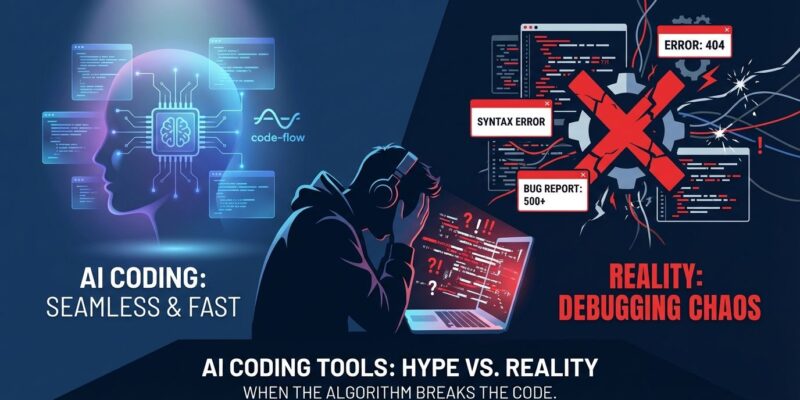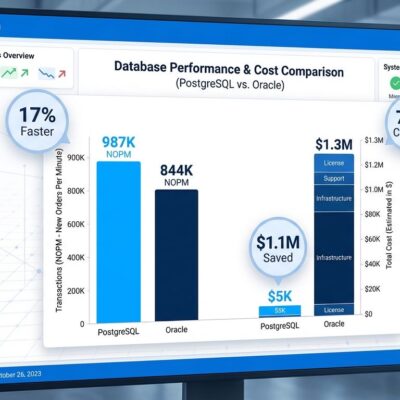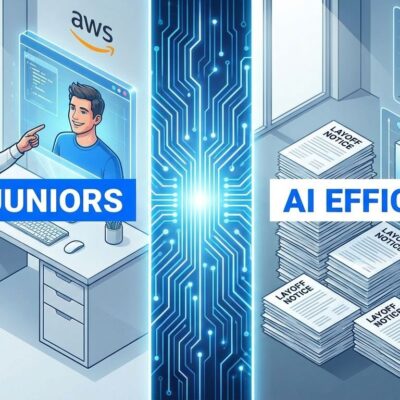
Andrej Karpathy, OpenAI co-founder and former Tesla AI director, coined vibe coding in February 2025. In a viral tweet viewed over 4.5 million times, he described a future where developers “fully give in to the vibes, embrace exponentials, and forget that the code even exists.” AI tools like Cursor Composer with Claude Sonnet had become so good, he claimed, that coding transformed into a casual flow: “I just see stuff, say stuff, run stuff, and copy paste stuff, and it mostly works.”
Eight months later, Karpathy released Nanochat, a minimal ChatGPT clone built for around $100. The project showcased his technical chops—8,000 lines of Python and Rust implementing a full training pipeline. But when developers on Hacker News asked about his process, Karpathy dropped an admission that shattered his own hype: “It’s basically entirely hand-written” because he “tried to use claude/codex agents a few times but they just didn’t work well enough at all and net unhelpful.”
The inventor of vibe coding doesn’t actually use vibe coding. The irony is perfect, and it exposes everything wrong with the AI coding hype cycle.
What Vibe Coding Promised
Karpathy’s original vision captured something developers wanted to believe: that AI had finally gotten good enough to handle the grunt work while humans focused on the big picture. “Forget that the code even exists,” he wrote. Just describe what you want, accept whatever the AI generates, and move on. When errors pop up, copy-paste them back to the AI with no comment. It usually fixes itself.
The appeal was obvious. Who wouldn’t want to skip the tedious parts of coding—the boilerplate, the debugging, the careful review of every line? Major tools like Cursor Composer, GitHub Copilot, and Claude Code made this vision seem achievable. Developers reported shipping code 2.5 times faster. Project completion times dropped by up to 55%. A movement was born.
But Karpathy included a caveat that most people glossed over: “It’s not too bad for throwaway weekend projects.” That qualifier—throwaway projects—turned out to be the entire story.
When Reality Hit: The Nanochat Admission
Nanochat wasn’t a throwaway project. It was a serious technical implementation: a production-ready ChatGPT clone with custom tokenization, training infrastructure, and inference optimization. Karpathy built it to prove that high-quality AI systems didn’t require massive budgets—just deep technical expertise.
And that’s precisely why vibe coding failed him. The code was too novel, too specialized, too far from what AI models had seen during training. As he explained, the repository was “too far off the data distribution.” In plain terms: when you’re building something genuinely new, AI can’t help because it’s never seen code like yours before.
This is the fundamental flaw in vibe coding that Karpathy’s own experience revealed. AI coding tools excel at common patterns—boilerplate, standard library usage, familiar frameworks. But real software development, the kind that creates value, involves solving problems that don’t have cookie-cutter solutions. And that’s exactly where “forgetting the code exists” becomes dangerous.
The Backlash Builds
Karpathy wasn’t the only one discovering vibe coding’s limitations. By May 2025, Andrew Ng—Stanford professor, former Google Brain scientist, and one of AI’s most prominent advocates—publicly criticized the term. “It’s misleading a lot of people into thinking, just go with the vibes, you know—accept this, reject that,” Ng said at a conference. The reality, he insisted, was far more demanding: “When I’m coding for a day with AI coding assistance, I’m frankly exhausted by the end of the day.” It’s not vibes. It’s a deeply intellectual exercise.
Fast Company crystallized the growing skepticism in September 2025 with an article titled “The vibe coding hangover is upon us.” The piece documented a wave of developer frustration, with terms like “development hell,” “toxic waste,” and “AI babysitting” describing the reality of working with AI-generated code. Jack Zante Hays, a senior engineer at PayPal, warned that “code created by AI coding agents can become development hell,” generating technical debt and maintenance burdens even as it spins up features quickly.
The numbers backed up the anecdotes. Stack Overflow’s 2025 survey found that while more than half of professional developers use AI coding tools daily, 46% distrust their accuracy. Developer sentiment toward AI tools dropped from 70% positive in 2024 to just 60% in 2025. When Coinbase CEO Brian Armstrong bragged that nearly half his exchange’s code was AI-generated, he faced ridicule rather than admiration.
The vibe was officially off.
The Evidence Against Vibe Coding
Beyond sentiment, hard data revealed vibe coding’s real costs. A 2025 Veracode study analyzing over 100 large language models across 80 coding tasks found that 45% of AI-generated code introduces security vulnerabilities—many of them critical flaws in the OWASP Top 10. One in three code snippets contained exploitable bugs. A Swedish vibe coding app called Lovable saw 170 out of 1,645 generated web applications expose personal information due to security flaws.
The productivity paradox was equally damning. While 74% of developers reported feeling more productive with AI tools, actual measurements told a different story: perceived 20% productivity gains masked a 19% slowdown due to error correction and debugging. Sixty-three percent of developers admitted spending more time debugging AI-generated code than they would have spent writing it themselves. A study of 120 UK tech firms found teams spent 41% more time debugging AI code in systems exceeding 50,000 lines.
Then there’s technical debt. AI-generated code includes 2.4 times more abstraction layers than human-written code, creating unnecessary complexity. Forty percent of junior developers admitted deploying code they didn’t fully understand. Forrester forecast a “technical debt tsunami” over the next two years as organizations grapple with maintaining AI-generated codebases that nobody comprehends.
These aren’t edge cases. These are systemic problems that emerge when you “forget the code exists.”
The Right Way to Use AI Coding Tools
The lesson isn’t to abandon AI tools—it’s to use them responsibly. Simon Willison, a developer and AI tools advocate, proposed “vibe engineering” as the balanced alternative. The distinction is simple: if an LLM wrote every line of your code but you reviewed, tested, and understood it all, that’s not vibe coding—that’s using AI as a typing assistant.
GitHub’s Chief Product Officer Mario Rodriguez put it well: “Vibe coding unlocks creativity and speed, but it really only delivers production value when paired with rigorous review, security and developer judgment.” Andrew Ng, despite criticizing the term, remains bullish on AI-assisted coding when used thoughtfully.
Karpathy’s original caveat was actually correct: vibe coding works for “throwaway weekend projects.” The problem arose when developers applied the same approach to production systems, enterprise codebases, and critical infrastructure. That’s when the vibes turn into vulnerabilities.
The Emperor’s New Code
Karpathy’s Nanochat admission validates what many developers felt but hesitated to say: the AI coding revolution was oversold. When someone builds genuinely novel software—the kind that pushes boundaries and solves new problems—AI tools hit their limits. You can’t outsource understanding. You can’t “forget the code exists” and expect secure, maintainable systems.
The real value of AI coding tools emerges when developers maintain responsibility. Use them to accelerate. Use them to explore alternatives. Use them to handle boilerplate. But review every line. Test thoroughly. Understand the architecture. Because when the code is “too far off the data distribution”—which all interesting code eventually is—you’ll be on your own.
The inventor of vibe coding learned that the hard way. So did thousands of developers who chased the hype into development hell. The hangover is real. The question now is whether the industry learned the lesson before the technical debt tsunami hits.











